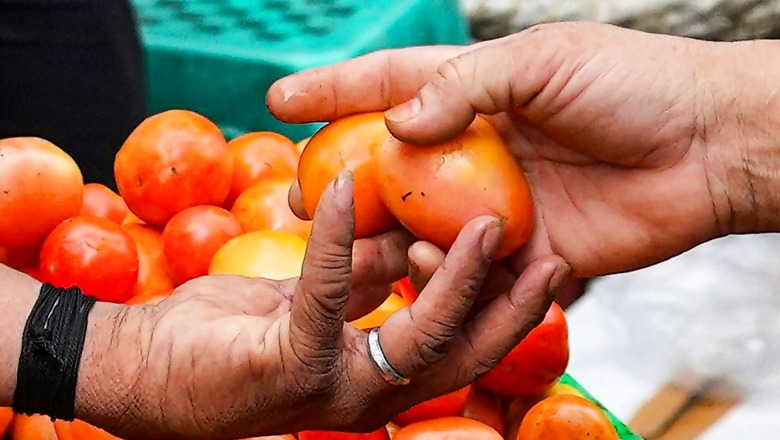
views
Even as tomato prices have touched as high as Rs 250 per kg in various parts of the country, at least 68 per cent of households have reduced their consumption while 14 per cent have stopped buying it, according to a survey by LocalCircles.
For the last few weeks, the retail price of tomatoes has risen sharply and was ruling as high as Rs 244 per kg on Friday across major cities owing to the lean season plus heavy rains.
Amid the rising tomato prices, the government is selling the kitchen staple at a discounted rate at various locations in Delhi, Lucknow, Patna and Kanpur, among others, to provide relief to consumers through vans.
National Cooperative Consumers’ Federation of India (NCCF) and National Agricultural Cooperative Marketing Federation of India (NAFED) are selling tomatoes on behalf of the Centre.
About 87 per cent of the respondents have confirmed that they have been shelling out over Rs 100 per kg for tomatoes, while only 13 per cent are paying less than Rs 100 per kg, possibly in rural areas or places where tomatoes are grown, according to the survey report.
As per the government data, the average all-India retail price of tomatoes stood at Rs 116.76 per kg, while the maximum rate was Rs 244 per kg and the minimum was Rs 40 per kg.
Among metros, tomatoes were ruling costlier at Rs 178 per kg in Delhi, followed by Rs 147 per kg in Mumbai, Rs 145 per kg in Kolkata and Rs 132 per kg in Chennai on Thursday.
Tomato prices normally shoot up during July-August and October-November periods, which are generally lean production months. Supply disruption caused due to monsoon has led to a sharp rise in the rates.
Tomato is produced almost in all the states in India, though in varying quantities. Maximum production is in southern and western regions of India, contributing 56-58 per cent of all India production. Southern and Western regions being surplus states, feed to other markets depending on production seasons. The production seasons are also different across regions.
The peak harvesting season occurs from December to February. The periods during July-August and October-November are generally the lean production months for tomato. July coinciding with monsoon season, adds to further challenges related to distribution and increased transit losses adding to price rise. The cycle of planting and harvesting seasons and variation across regions are primarily responsible for price seasonality in Tomato.
Apart from the normal price seasonality, temporary supply chain disruptions and crop damage due to adverse weather conditions etc. often lead to sudden spikes in prices.



















Comments
0 comment